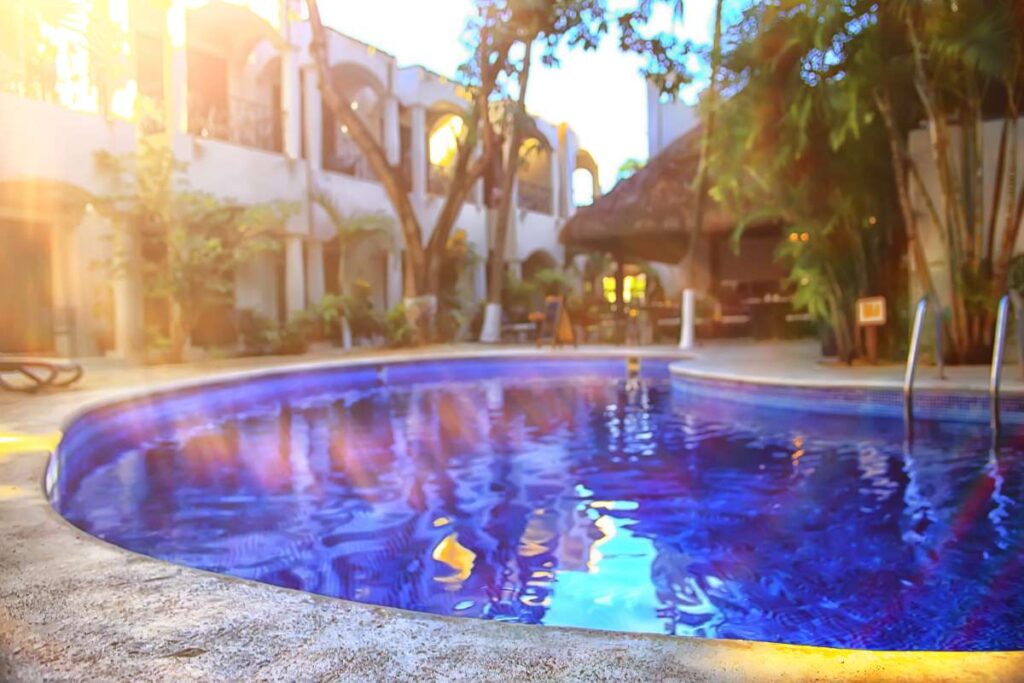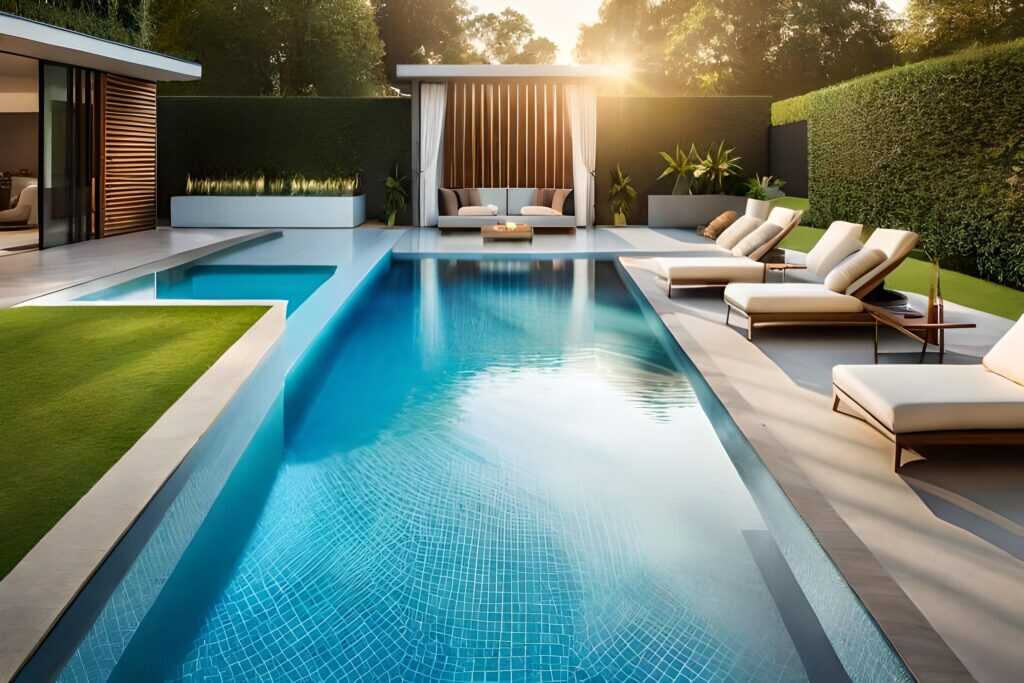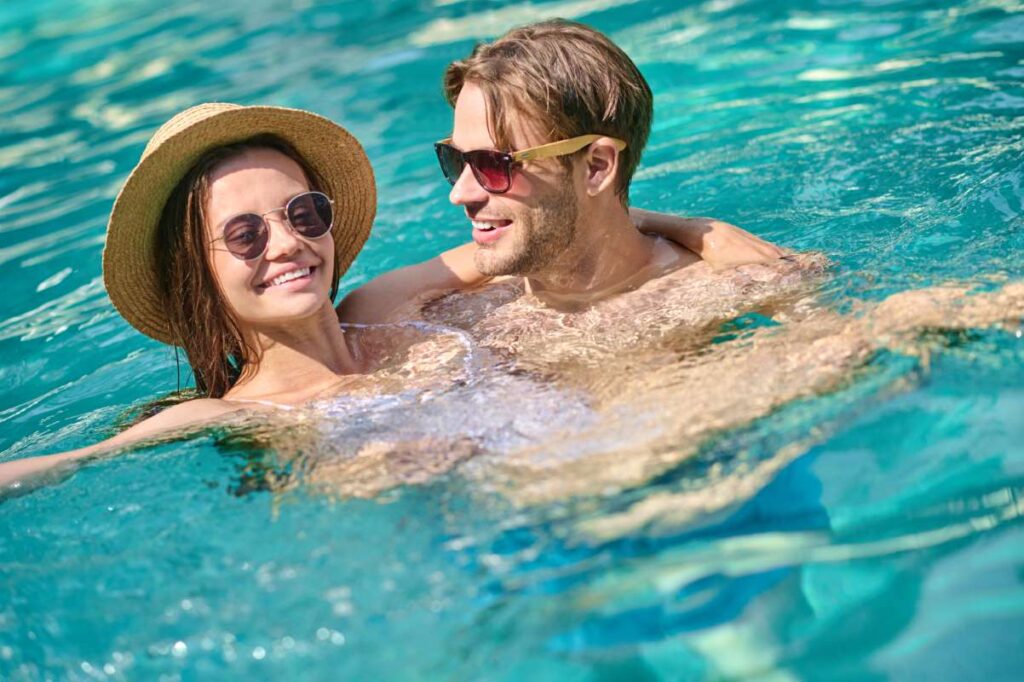Balancing Chemicals for Heated Pools vs. Non-Heated Pools
Discover how to balance chemicals for heated and non-heated pools effectively, ensuring clean and safe swimming environments all year round.
Maintaining the perfect chemical balance in swimming pools is crucial for ensuring water quality, safety, and overall enjoyment. However, the approach to chemical balancing can vary significantly between heated and non-heated pools. In this blog post, we’ll delve into the differences in chemical maintenance between these two types of pools, discuss the importance of proper chemical balance, and provide practical tips for pool owners. By the end of this article, you will have a comprehensive understanding of how to keep your pool water crystal clear and safe, regardless of whether it’s heated or not.
The Importance of Chemical Balance in Pools
– Proper chemical balance in pool water is essential for several reasons: – Health and Safety: Balanced water prevents the growth of harmful bacteria and algae, protecting swimmers from potential health hazards. – Equipment Longevity: Maintaining appropriate pH and alkalinity levels helps prolong the life of pool equipment, such as pumps and filters. – Water Clarity: Correct chemical balance ensures water remains clear and visually appealing, enhancing the overall swimming experience.Understanding the specific needs of your pool type is critical. Heated pools, due to higher temperatures, can promote faster chemical reactions, while non-heated pools may require a different approach to maintain balance.
Key Differences in Chemical Needs
– Temperature Effects: Heated pools generally operate at temperatures between 78°F and 84°F, while non-heated pools range from cooler temperatures based on the season. Higher temperatures in heated pools can lead to increased evaporation and higher demand for chemicals.- Evaporation Rates: The warm water in heated pools tends to evaporate more quickly, which can concentrate chemicals and alter pH levels. This necessitates more frequent testing and adjustment of chemical levels.- Algae Growth: Warm water environments are more conducive to algae growth. Thus, heating systems require regular use of algaecides and shock treatments to keep the water clear. For both heated and non-heated pools, regular testing of water chemistry is essential. However, the frequency and types of adjustments needed can differ greatly.
Chemical Balancing Techniques for Heated Pools
When it comes to maintaining heated pools, specific strategies should be adopted:1. Regular Testing: Test the water at least once a week, focusing on key parameters such as pH, total alkalinity, and chlorine levels. Heated pools may need testing more frequently, especially after heavy use. 2. Adjusting pH Levels: The ideal pH range for pool water is between 7.2 and 7.8. If the pH drifts above this range, it can lead to cloudiness and scaling. Use pH decreasers (such as muriatic acid) to lower levels and pH increasers (sodium carbonate) to raise them.3. Chlorine Management: Maintain free chlorine levels between 1-3 ppm. Heated pools may require higher chlorine levels due to increased water temperatures. Regularly shock the pool, especially after heavy usage, to maintain sanitation.4. Alkalinity Control: Total alkalinity should be kept between 80-120 ppm. This helps stabilize pH levels. If alkalinity is low, add sodium bicarbonate; if high, use muriatic acid.5. Preventing Algae: Use a regular algaecide treatment during warm months and consider a shock treatment every 1-2 weeks to prevent algae growth.By implementing these strategies, pool owners can ensure their heated pools remain clean and inviting.
Chemical Balancing Techniques for Non-Heated Pools
Non-heated pools have their own set of considerations, especially since they are often subjected to fluctuating temperatures throughout the seasons.1. Testing Frequency: Test water chemistry bi-weekly or weekly, depending on pool usage and environmental factors. Seasonal changes can significantly impact chemical balance.2. pH Maintenance: As with heated pools, keep pH levels between 7.2 and 7.8. Non-heated pools may require less frequent pH adjustments, as cooler water tends to be more stable.3. Chlorine Levels: Non-heated pools can maintain lower chlorine levels, typically between 1-2 ppm. Still, regular shocking is necessary to prevent bacteria and algae, particularly after rain or heavy use.4. Total Alkalinity: A similar range (80-120 ppm) for total alkalinity applies to non-heated pools, helping to protect against pH swings.5. Seasonal Adjustments: Be mindful of seasonal changes. During colder months, reduce chemical use as the pool is less frequently used. However, do not neglect maintenance; winterizing chemicals can help prevent algae growth.Understanding these techniques will empower pool owners to effectively manage their non-heated pools.
Best Practices for Both Pool Types
Regardless of whether you own a heated or non-heated pool, certain best practices apply to maintain optimal chemical balance:- Use Quality Test Kits: Invest in reliable and accurate test kits to check water chemistry regularly. Digital testers can provide quick and precise readings.- Preventive Maintenance: Regularly clean the pool and its filters to support chemical efficacy and water clarity.- Understand Local Water Chemistry: The chemical composition of your local water supply can affect pool balance. Be prepared to adjust your chemical regimen based on local water conditions.- Educate Yourself: Continuous learning about pool maintenance is key. Consider enrolling in training programs focused on pool care, such as those offered by
Superior Pool Routes Training.- Consult Experts: Don’t hesitate to reach out to professionals if you encounter persistent issues. Resources like
Pool Routes FAQ can help clarify common concerns.By adhering to these best practices, you can enhance the longevity and clarity of your pool while ensuring a safe swimming environment.
Conclusion
In summary, understanding the differences between heated and non-heated pools regarding chemical balancing is essential for any pool owner. From the effects of temperature on chemical demand to the specific techniques needed to maintain clarity and safety, the insights shared in this article can help ensure your swimming environment is always at its best. Whether your pool is heated for year-round enjoyment or left to the elements, maintaining proper chemical balance is critical. Embracing these practices will lead to cleaner, safer, and more enjoyable swimming experiences. If you’re considering entering the pool maintenance industry, exploring our
Pool Routes For Sale can provide you with the framework to succeed. Join the many satisfied clients who’ve benefited from our services and elevate your entrepreneurial journey today!



